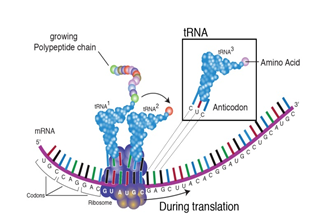

28th March 2022 (6 Topics)
Context
An organism that has been around from 2 billion years ago has given biologists from Centre for Cellular and Molecular Biology, Hyderabad (CCMB), a clue as to how mitochondria became an inseparable part of animal and plant cells.
About
What is Mitochondria?
- Mitochondria are membrane-bound cell organelles (mitochondrion, singular) that generate most of the chemical energy needed to power the cell's biochemical reactions.
- Chemical energy produced by the mitochondria is stored in a small molecule called adenosine triphosphate (ATP).
- Mitochondria contain their own small chromosomes.
- Generally, mitochondria, and therefore mitochondrial DNA, are inherited only from the mother.

- Mitochondria are integral parts of the eukaryotic cell.
- They are dubbed the power houses of the cell.
How Mitochondria became part of animal and Plant cells?
- Mitochondria were not always part of the animal and plant cells.
- Once, about two billion years ago, a prokaryotic organism (without a nucleus) called archaea captured a bacterial cell.
- The bacterial cell learnt to live within the archaea as an endosymbiont.
- In the late 19th century, microscopists observed that organelles like chloroplast and mitochondria undergo division inside eukaryotic cells that resembles bacterial division, which led them to suspect that these organelles might have arisen from bacterial endosymbionts.
- The researchers identified two key transformations, one in the molecule known as DTD for short and another in the transfer-RNA (tRNA).
- The lab worked on a molecule called D-aminoacyl-tRNA deacylase (DTD).
- It has been observed some unexpected biochemistry of eukaryotic DTD that could be explained based on endosymbiotic origin of complex eukaryotic cell organelles.
- Endosymbiosis is an intense form of symbiosis when one of the organisms is captured and internalized by the other.
- By studying an organism known as jakobid, the researchers have identified two adjustments that had to take place to facilitate the integration of the two organisms.
- These adjustments were made in the process of optimisation when the two organisms merged together, evidently for compatibility.
- The researchers show that these changes, in a protein (DTD) and a tRNA (carrying an amino acid glycine for protein synthesis) are crucial for the successful emergence of mitochondria.
|
transfer-RNA (tRNA):
|
About Centre for Cellular & Molecular Biology (CCMB):
- The Centre for Cellular and Molecular Biology (CCMB) is one of the constituent national laboratories of the Council of Scientific and Industrial Research (CSIR), New Delhi, India.
- The Centre for Cellular & Molecular Biology (CCMB) is a premier research organization in frontier areas of modern biology.
- The objectives of the Centre are to conduct high quality basic research and training in frontier areas of modern biology, and promote centralized national facilities for new and modern techniques in the inter-disciplinary areas of biology.
- CCMB was set up initially as a semi-autonomous Centre in 1977.
- During 1981-82, CCMB was accorded status of a full-fledged national laboratory with its own Executive Committee and Scientific Advisory Council.
- The research and development activities at CCMB are grouped under the following key areas:
- Developmental Biology
- Structural Biology
- Cell and Stem Cell Biology
- Genomics and Epigenetic Regulation
- Microbes and Biology of Infection
- Wildlife Conservation and Ecology
- Crop Improvement
- Innovation & Technology Development
- Skill Development Program



